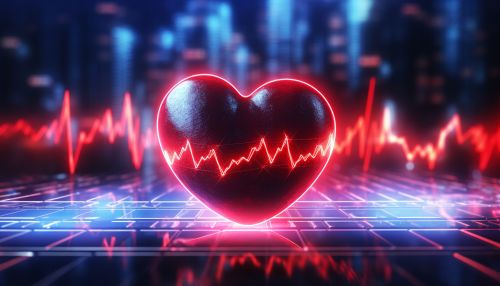Arrhythmia
Overview
Arrhythmia, also known as cardiac dysrhythmia or irregular heartbeat, is a group of conditions in which the heartbeat is irregular, too fast, or too slow. The heart rate that is too fast – above 100 beats per minute in adults – is called tachycardia, and the heart rate that is too slow – below 60 beats per minute – is called bradycardia. Many types of arrhythmia have no symptoms. When symptoms are present, they may include palpitations or feeling a pause between heartbeats. More seriously, arrhythmia can cause fainting, shortness of breath, or chest pain. While most types of arrhythmia are not serious, some predispose a person to complications such as stroke or heart failure.


Types of Arrhythmia
Arrhythmias are classified by their origin (atria or ventricles) and by the speed of heart rate they cause:
Atrial Arrhythmias
The atria are the two upper chambers of the heart. They receive blood from the body and pump it into the ventricles. The most common types of atrial arrhythmias are:
- Atrial fibrillation (AF): This is a disorganized rhythm in the atria. Instead of the atria and ventricles working together to pump blood, the atria quiver. This can lead to blood pooling and clot formation, which can cause a stroke.
- Atrial flutter: This is similar to AF but the rhythm in your atria is more organized and less chaotic. However, it still increases your risk of stroke.
Ventricular Arrhythmias
The ventricles are the two lower chambers of the heart. They pump blood to the body. The most common types of ventricular arrhythmias are:
- Ventricular tachycardia: This is a fast, regular beating of the ventricles that may last for only a few seconds or for much longer.
- Ventricular fibrillation: This is a disorganized firing of impulses from the ventricles. When this occurs, the heart can't pump any blood, which is a medical emergency that must be treated with CPR and defibrillation as soon as possible.
Causes
Arrhythmias can be caused by many different factors, including:
- Heart disease: This is the most common cause of arrhythmias. Heart disease that damages the heart's electrical system can disrupt the regular rhythm of the heart.
- High blood pressure: This can enlarge the heart or damage the heart's electrical system, leading to arrhythmias.
- Other medical conditions: Conditions such as thyroid disease, sleep apnea, and certain types of lung disease can also cause arrhythmias.
- Certain substances: Some substances, including alcohol, caffeine, nicotine, and illegal drugs can cause arrhythmias.
- Certain medications: Some medications, even those taken for non-heart-related conditions, can cause arrhythmias.
Diagnosis
Arrhythmias are diagnosed through a variety of tests. These may include:
- Electrocardiogram (ECG): This is the most common test for diagnosing arrhythmias. It records the electrical activity of the heart and can help the doctor detect irregularities in the heart's rhythm and structure.
- Holter monitor: This portable ECG device is carried in your pocket or worn on a belt or shoulder strap. It records the heart's activity for 24 to 72 hours, providing the doctor with a prolonged look at the heart's activity to detect arrhythmias.
- Event monitor: This portable ECG device is intended to monitor your heart activity over a few weeks to a few months. You activate it only when you experience symptoms of an arrhythmia.
- Echocardiogram: This test uses sound waves to create a detailed image of the heart's structure and function.
Treatment
Treatment of arrhythmias can include lifestyle changes, medications, invasive therapies, electrical devices or surgery:
- Lifestyle changes: These can include quitting smoking, limiting alcohol and caffeine, and avoiding certain over-the-counter medications that can cause arrhythmias.
- Medications: There are many different types of medications that can be used to treat arrhythmias. These include beta-blockers, calcium channel blockers, and antiarrhythmic drugs.
- Invasive therapies: These can include catheter ablation, in which a catheter is threaded through the blood vessels to the heart to deliver energy to the areas causing the arrhythmia, disrupting the abnormal electrical pathway.
- Electrical devices: These can include pacemakers and implantable cardioverter-defibrillators (ICDs). These devices are implanted in the chest and use electrical pulses or shocks to help control the heart's rhythm.
- Surgery: In some cases, surgery may be needed to treat arrhythmias. This can include maze surgery, in which a surgeon makes a series of surgical incisions in the atria to prevent the spread of disorganized electrical signals, or coronary bypass surgery, which improves blood flow to the heart.
